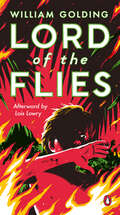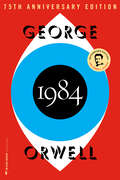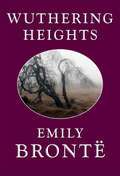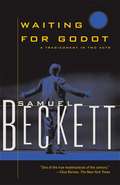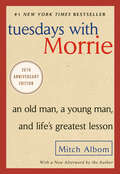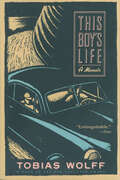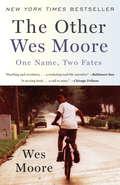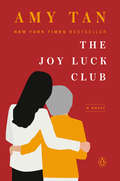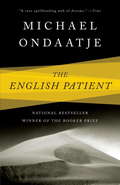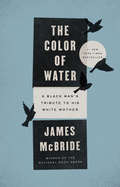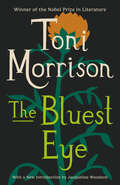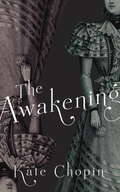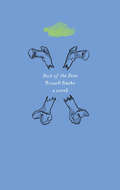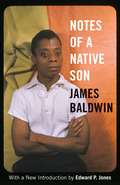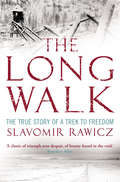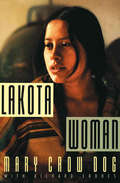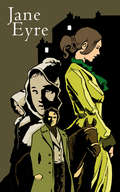Special Collections
Flagstaff Unified School District High School
Description: Board Approved Novels for High School Grades 9-12
- Table View
- List View
A Midsummer Night's Dream
by William ShakespeareThe fairies of the forest interfere with the lives of mortals attending the wedding feast of Theseus, Duke of Athens, and Hipployta, and the realms of mortals and fairies collide on one magical midsummer night.
Night
by Barack Obama and Elie Wiesel and Marion Wiesel and Samantha Power and Elisha WieselA memorial edition of Elie Wiesel’s seminal memoir of surviving the Nazi death camps, with tributes by President Obama and Samantha Power.
When Elie Wiesel died in July 2016, the White House issued a memorial statement in which President Barack Obama called him “the conscience of the world.” The whole of the president’s eloquent tribute will appear as a foreword to this memorial edition of Night. “Like millions of admirers, I first came to know Elie through his account of the horror he endured during the Holocaust simply because he was Jewish,” wrote the president.
In 1986, when Wiesel received the Nobel Peace Prize, the Norwegian Nobel Committee wrote, “Elie Wiesel was rescued from the ashes of Auschwitz after storm and fire had ravaged his life. In time he realized that his life could have purpose: that he was to be a witness, the one who would pass on the account of what had happened so that the dead would not have died in vain and so the living could learn.”
Night, which has sold millions of copies around the world, is the very embodiment of that conviction. It is written in simple, understated language, yet it is emotionally devastating, never to be forgotten.
Born in the town of Sighet, Transylvania, Wiesel was a teenager when he and his family were deported to Auschwitz and then Buchenwald. Night is the shattering record of his memories of the death of his mother, father, and little sister, Tsipora; the death of his own innocence; and his despair as a deeply observant Jew confronting the absolute evil of man. “Never shall I forget that night, the first night in camp, that turned my life into one long night,” writes Wiesel. “Never shall I forget . . . even were I condemned to live as long as God Himself.” These words are etched into the wall of the Holocaust Memorial Museum in Washington.
Far more than a chronicle of the sadistic realm of the camps, Night also addresses many of the philosophical and personal questions implicit in any serious consideration of the Holocaust.
The memorial edition of Night includes the unpublished text of a speech that Wiesel delivered before the United Nations General Assembly on the sixtieth anniversary of the liberation of Auschwitz entitled “Will the World Ever Know.” These remarks powerfully resonate with Night and with subsequent acts of genocide.
Lord of the Flies
by William Golding and E. L. EpsteinBefore The Hunger Games there was Lord of the Flies
Lord of the Flies remains as provocative today as when it was first published in 1954, igniting passionate debate with its startling, brutal portrait of human nature.
Though critically acclaimed, it was largely ignored upon its initial publication.
Yet soon it became a cult favorite among both students and literary critics who compared it to J.D. Salinger's The Catcher in the Rye in its influence on modern thought and literature.
William Golding's compelling story about a group of very ordinary small boys marooned on a coral island has become a modern classic.
At first it seems as though it is all going to be great fun; but the fun before long becomes furious and life on the island turns into a nightmare of panic and death.
As ordinary standards of behaviour collapse, the whole world the boys know collapses with them--the world of cricket and homework and adventure stories--and another world is revealed beneath, primitive and terrible.
Labeled a parable, an allegory, a myth, a morality tale, a parody, a political treatise, even a vision of the apocalypse, Lord of the Flies has established itself as a true classic.
1984
by George OrwellA PBS Great American Read Top 100 Pick
With extraordinary relevance and renewed popularity, George Orwell’s 1984 takes on new life in this edition. “Orwell saw, to his credit, that the act of falsifying reality is only secondarily a way of changing perceptions. It is, above all, a way of asserting power.”—The New Yorker.
In 1984, London is a grim city in the totalitarian state of Oceania where Big Brother is always watching you and the Thought Police can practically read your mind. Winston Smith is a man in grave danger for the simple reason that his memory still functions. Drawn into a forbidden love affair, Winston finds the courage to join a secret revolutionary organization called The Brotherhood, dedicated to the destruction of the Party. Together with his beloved Julia, he hazards his life in a deadly match against the powers that be.
Lionel Trilling said of Orwell’s masterpiece, “1984 is a profound, terrifying, and wholly fascinating book. It is a fantasy of the political future, and like any such fantasy, serves its author as a magnifying device for an examination of the present.”
Though the year 1984 now exists in the past, Orwell’s novel remains an urgent call for the individual willing to speak truth to power.
Wuthering Heights
by Emily BrontëEmily Brontë's only published novel, Wuthering Heights made its debut in 1847. Wuthering Heights is a tale of a passionate but jealous love affair between the mysterious Heathcliff and free-spirited Catherine Earnshaw. Far from a traditional romance, the novel does not shy away from portraying the destructiveness and resentment that can arise from love.
Waiting for Godot
by Samuel BeckettFrom an inauspicious beginning at the tiny Left Bank Theatre de Babylone in 1953, followed by bewilderment among American and British audiences, Waiting for Godot has become of the most important and enigmatic plays of the past fifty years and a cornerstone of twentieth-century drama. As Clive Barnes wrote, “Time catches up with genius … Waiting for Godot is one of the masterpieces of the century.”
The story revolves around two seemingly homeless men waiting for someone—or something—named Godot. Vladimir and Estragon wait near a tree, inhabiting a drama spun of their own consciousness. The result is a comical wordplay of poetry, dreamscapes, and nonsense, which has been interpreted as mankind’s inexhaustible search for meaning. Beckett’s language pioneered an expressionistic minimalism that captured the existential post-World War II Europe. His play remains one of the most magical and beautiful allegories of our time.
Tuesdays with Morrie
by Mitch Albom#1 NEW YORK TIMES BESTSELLER
“A wonderful book, a story of the heart told by a writer with soul.”—Los Angeles Times
“The most important thing in life is to learn how to give out love, and to let it come in.”
Maybe it was a grandparent, or a teacher, or a colleague. Someone older, patient and wise, who understood you when you were young and searching, helped you see the world as a more profound place, gave you sound advice to help you make your way through it. For Mitch Albom, that person was his college professor Morrie Schwartz. Maybe, like Mitch, you lost track of this mentor as you made your way, and the insights faded, and the world seemed colder. Wouldn’t you like to see that person again, ask the bigger questions that still haunt you, receive wisdom for your busy life today the way you once did when you were younger? Mitch Albom had that second chance. He rediscovered Morrie in the last months of the older man’s life. Knowing he was dying, Morrie visited with Mitch in his study every Tuesday, just as they used to back in college. Their rekindled relationship turned into one final “class”: lessons in how to live. “The truth is, Mitch,” he said, “once you learn how to die, you learn how to live.”
Tuesdays with Morrie is a magical chronicle of their time together, through which Mitch shares Morrie’s lasting gift with the world.
This Boy's Life
by Tobias WolffThe PEN/Faulkner Award–winning author recounts coming of age in 1950s Washington State with his mother and abusive stepfather in this classic memoir.
This unforgettable memoir, by one of our most gifted writers, introduces us to the young Toby Wolff, by turns tough and vulnerable, crafty and bumbling, and ultimately winning. Separated by divorce from his father and brother, Toby and his mother are constantly on the move. As he fights for identity and self-respect against the unrelenting hostility of a new stepfather, his experiences are at once poignant and comical, and Wolff masterfully re-creates the frustrations, cruelties, and joys of adolescence. His various schemes—running away to Alaska, forging checks, and stealing cars—lead eventually to an act of outrageous self-invention that releases him into a new world of possibility.
The Other Wes Moore
by Wes MooreThe chilling truth is that his story could have been mine. The tragedy is that my story could have been his.
Two kids named Wes Moore were born blocks apart within a year of each other. Both grew up fatherless in similar Baltimore neighborhoods and had difficult childhoods; both hung out on street corners with their crews; both ran into trouble with the police. How, then, did one grow up to be a Rhodes Scholar, decorated veteran, White House Fellow, and business leader, while the other ended up a convicted murderer serving a life sentence? Wes Moore, the author of this fascinating book, sets out to answer this profound question. In alternating narratives that take readers from heart-wrenching losses to moments of surprising redemption, The Other Wes Moore tells the story of a generation of boys trying to find their way in a hostile world.
BONUS: This edition contains a new afterword and a The Other Wes Moore discussion guide.
The Joy Luck Club
by Amy TanAmy Tan’s beloved, New York Times bestselling tale of mothers and daughters
Four mothers, four daughters, four families whose histories shift with the four winds depending on who's "saying" the stories. In 1949 four Chinese women, recent immigrants to San Francisco, begin meeting to eat dim sum, play mahjong, and talk. United in shared unspeakable loss and hope, they call themselves the Joy Luck Club. Rather than sink into tragedy, they choose to gather to raise their spirits and money. "To despair was to wish back for something already lost. Or to prolong what was already unbearable." Forty years later the stories and history continue.
With wit and sensitivity, Amy Tan examines the sometimes painful, often tender, and always deep connection between mothers and daughters. As each woman reveals her secrets, trying to unravel the truth about her life, the strings become more tangled, more entwined. Mothers boast or despair over daughters, and daughters roll their eyes even as they feel the inextricable tightening of their matriarchal ties. Tan is an astute storyteller, enticing readers to immerse themselves into these lives of complexity and mystery.
The Handmaid's Tale
by Margaret AtwoodAn instant classic and eerily prescient cultural phenomenon, from &“the patron saint of feminist dystopian fiction&” (New York Times). Now an award-winning Hulu series starring Elizabeth Moss.In this multi-award-winning, bestselling novel, Margaret Atwood has created a stunning Orwellian vision of the near future. This is the story of Offred, one of the unfortunate &“Handmaids&” under the new social order who have only one purpose: to breed. In Gilead, where women are prohibited from holding jobs, reading, and forming friendships, Offred&’ s persistent memories of life in the &“time before&” and her will to survive are acts of rebellion. Provocative, startling, prophetic, and with Margaret Atwood&’s devastating irony, wit, and acute perceptive powers in full force, The Handmaid&’s Tale is at once a mordant satire and a dire warning.
The English Patient
by Michael OndaatjeBOOKER PRIZE WINNER • NATIONAL BESTSELLER • The bestselling author of Warlight traces the intersection of four damaged lives in an abandoned Italian villa at the end of World War II. &“A rare spellbinding web of dreams.&” —Time The nurse Hana, exhausted by death, obsessively tends to her last surviving patient. Caravaggio, the thief, tries to reimagine who he is, now that his hands are hopelessly maimed. The Indian sapper Kip searches for hidden bombs in a landscape where nothing is safe but himself. And at the center of his labyrinth lies the English patient, nameless and hideously burned, a man who is both a riddle and a provocation to his companions—and whose memories of suffering, rescue, and betrayal illuminate this book like flashes of heat lightning.
The Color of Water
by James McbrideWho is Ruth McBride Jordan? A self-declared "light-skinned" woman evasive about her ethnicity, yet steadfast in her love for her twelve black children. James McBride, journalist, musician, and son, explores his mother's past, as well as his own upbringing and heritage, in a poignant and powerful debut, The Color Of Water: A Black Man's Tribute to His White Mother.
The son of a black minister and a woman who would not admit she was white, James McBride grew up in "orchestrated chaos" with his eleven siblings in the poor, all-black projects of Red Hook, Brooklyn. "Mommy," a fiercely protective woman with "dark eyes full of pep and fire," herded her brood to Manhattan's free cultural events, sent them off on buses to the best (and mainly Jewish) schools, demanded good grades, and commanded respect. As a young man, McBride saw his mother as a source of embarrassment, worry, and confusion—and reached thirty before he began to discover the truth about her early life and long-buried pain.
In The Color of Water, McBride retraces his mother's footsteps and, through her searing and spirited voice, recreates her remarkable story. The daughter of a failed itinerant Orthodox rabbi, she was born Rachel Shilsky (actually Ruchel Dwara Zylska) in Poland on April 1, 1921. Fleeing pogroms, her family emigrated to America and ultimately settled in Suffolk, Virginia, a small town where anti-Semitism and racial tensions ran high. With candor and immediacy, Ruth describes her parents' loveless marriage; her fragile, handicapped mother; her cruel, sexually-abusive father; and the rest of the family and life she abandoned.
At seventeen, after fleeing Virginia and settling in New York City, Ruth married a black minister and founded the all- black New Brown Memorial Baptist Church in her Red Hook living room. "God is the color of water," Ruth McBride taught her children, firmly convinced that life's blessings and life's values transcend race. Twice widowed, and continually confronting overwhelming adversity and racism, Ruth's determination, drive and discipline saw her dozen children through college—and most through graduate school. At age 65, she herself received a degree in social work from Temple University.
Interspersed throughout his mother's compelling narrative, McBride shares candid recollections of his own experiences as a mixed-race child of poverty, his flirtations with drugs and violence, and his eventual self- realization and professional success. The Color of Water touches readers of all colors as a vivid portrait of growing up, a haunting meditation on race and identity, and a lyrical valentine to a mother from her son.
The Bluest Eye
by Toni MorrisonPecola Breedlove, a young black girl, prays every day for beauty. Mocked by other children for the dark skin, curly hair, and brown eyes that set her apart, she yearns for normalcy, for the blond hair and blue eyes that she believes will allow her to finally fit in. Yet as her dream grows more fervent, her life slowly starts to disintegrate in the face of adversity and strife.
A powerful examination of our obsession with beauty and conformity, Toni Morrison’s virtuosic first novel asks powerful questions about race, class, and gender with the subtlety and grace that have always characterized her writing.
[This text is listed as an example that meets Common Core Standards in English language arts in grades 11-12 at http://www.corestandards.org.]
The Bell Jar
by Sylvia PlathI was supposed to be having the time of my life. When Esther Greenwood wins an internship on a New York fashion magazine in 1953, she is elated, believing she will finally realise her dream to become a writer. But in between the cocktail parties and piles of manuscripts, Esther's life begins to slide out of control. She finds herself spiralling into depression and eventually a suicide attempt, as she grapples with difficult relationships and a society which refuses to take women's aspirations seriously. The Bell Jar, Sylvia Plath's only novel, was originally published in 1963 under the pseudonym Victoria Lucas. The novel is partially based on Plath's own life and descent into mental illness, and has become a modern classic. The Bell Jar has been celebrated for its darkly funny and razor sharp portrait of 1950s society and has sold millions of copies worldwide.
The Awakening
by Kate ChopinThe Pontellier family are spending a hot, lazy holiday on the Gulf of Mexico. No-one expects that Edna Pontellier should be preoccupied with anything more than her husband and children. When an illicit summer romance awakens new ideas and longings in Edna, she can barely understand herself, and cannot hope for aid or acceptance in the stifling attitudes of Louisiana society. Kate Chopin's compelling, candid portrait of a woman attempting to break free caused an outcry when first published in 1899.
Rule of the Bone
by Russell BanksWhen we first meet him, Chappie is a punked-out teenager living with his mother and abusive stepfather in an upstate New York trailer park. During this time, he slips into drugs and petty crime. Rejected by his parents, out of school and in trouble with the police, he claims for himself a new identity as a permanent outsider; he gets a crossed-bones tattoo on his arm, and takes the name "Bone." He finds dangerous refuge with a group of biker-thieves, and then hides in the boarded-up summer house of a professor and his wife. He finally settles in an abandoned schoolbus with Rose, a child he rescues from a fast-talking pedophile. There Bone meets I-Man, an exiled Rastafarian, and together they begin a second adventure that takes the reader from Middle America to the ganja-growing mountains of Jamaica. It is an amazing journey of self-discovery through a world of magic, violence, betrayal and redemption.
Notes of a Native Son
by James Baldwin and Edward P. JonesA new edition published on the twenty-fifth anniversary of Baldwin's death, including a new introduction by an important contemporary writer Since its original publication in 1955, this first nonfiction collection of essays by James Baldwin remains an American classic. His impassioned essays on life in Harlem, the protest novel, movies, and African Americans abroad are as powerful today as when they were first written. "A straight-from-the-shoulder writer, writing about the troubled problems of this troubled earth with an illuminating intensity." --Langston Hughes, The New York Times Book Review "Written with bitter clarity and uncommon grace." --TimeFrom the Trade Paperback edition.
Much Ado About Nothing
by William ShakespeareTwo couples—Benedick and Beatrice, and Hero and Claudio—must overcome deception, gossip, and, occasionally, their own misplaced pride if their love is to persevere.
The Long Walk
by Slavomir RawiczSlavomir Rawicz was a young Polish cavalry officer. On 19th November 1939 he was arrested by the Russians and after brutal interrogation he was sentenced to 25 years in the Gulags. After a three month journey to Siberia in the depths of winter he escaped with six companions, realising that to stay in the camp meant almost certain death. In June 1941 they crossed the trans-Siberian railway and headed south, climbing into Tibet and freedom nine months later in March 1942 after travelling on foot through some of the harshest regions in the world, including the Gobi Desert. First published in 1956, this is one of the world's greatest true stories of adventure, survival and escape, has been the inspiration for the film The Way Back, directed by Peter Weir and starring Colin Farrell and Ed Harris.
Reading, Writing, and Leaving Home
by Lynn FreedEqual parts revelation and inspiration, these eleven essays combine a memoir of an exotic life, reflections on the art and craft of writing, and a brilliant examination of the always complex relationship between fiction and life. An account of translating a difficult mother into fiction, "Taming the Gorgon," becomes a poignant and hilarious meditation on the intricate knot binding mothers and daughters. The story of a scandal created by publication, "Sex with the Servants," becomes an inquiry into the porous boundary between private truth and public betrayal.Whether examining the difference between a story told and a story written, or describing the trials and rigors of teaching writing to pay the rent, Freed surprises, instructs, and entertains. Learned, opinionated, and wickedly funny, Freed tears off all fictional disguises and exposes the human being behind the artist. For writers, readers, or anyone engaged in literature, this is essential reading.
Lakota Woman
by Richard Erdoes and Mary Crow DogMary Brave Bird grew up fatherless in a one-room cabin, without running water or electricity, on the Rosebud Indian Reservation in South Dakota. Rebelling against the aimless drinking, punishing missionary school, narrow strictures for women, and violence and hopeless of reservation life, she joined the new movement of tribal pride sweeping Native American communities in the sixties and seventies. Mary eventually married Leonard Crow Dog, the American Indian Movement's chief medicine man, who revived the sacred but outlawed Ghost Dance.Originally published in 1990, Lakota Woman was a national best seller and winner of the American Book Award. It is a unique document, unparalleled in American Indian literature, a story of death, of determination against all odds, of the cruelties perpetuated against American Indians, and of the Native American struggle for rights. Working with Richard Erdoes, one of the twentieth century's leading writers on Native American affairs, Brave Bird recounts her difficult upbringing and the path of her fascinating life.
King Richard III
by William ShakespeareFinal play in Shakespeare's masterly dramatization of the struggle for power between the Houses of York and Lancaster. Richard is a stunning archvillain who schemes, seduces, betrays and murders his way to the throne, yet is capable of eliciting sympathy for his plight at the end.
Jane Eyre
by Charlotte BrontëA masterpiece of nineteenth-century English Literature, Charlotte Bronte's Jane Eyre follows the titular character as she attempts to rise from humble beginnings to find independence and love. Jane is a passionate and intelligent woman who struggles in life until she secures the job as governess for the wealthy, kind Edward Rochester. At Thornfield Hall, Rochester's estate, Jane finds herself falling for her employer, and though the feelings are reciprocated, Rochester also has a terrible secret that threatens their future together. Jane Eyre is not only a classic romance, but has been praised for its penetrating depiction of Jane's inner moral and intellectual struggles, and is still read widely to this day.
Into the Wild
by Jon KrakauerNATIONAL BESTSELLER • In April 1992 a young man from a well-to-do family hitchhiked to Alaska and walked alone into the wilderness north of Mt. McKinley. Four months later, his decomposed body was found by a moose hunter. This is the unforgettable story of how Christopher Johnson McCandless came to die."It may be nonfiction, but Into the Wild is a mystery of the highest order." —Entertainment WeeklyMcCandess had given $25,000 in savings to charity, abandoned his car and most of his possessions, burned all the cash in his wallet, and invented a new life for himself. Not long after, he was dead. Into the Wild is the mesmerizing, heartbreaking tale of an enigmatic young man who goes missing in the wild and whose story captured the world&’s attention. Immediately after graduating from college in 1991, McCandless had roamed through the West and Southwest on a vision quest like those made by his heroes Jack London and John Muir. In the Mojave Desert he abandoned his car, stripped it of its license plates, and burned all of his cash. He would give himself a new name, Alexander Supertramp, and, unencumbered by money and belongings, he would be free to wallow in the raw, unfiltered experiences that nature presented. Craving a blank spot on the map, McCandless simply threw the maps away. Leaving behind his desperate parents and sister, he vanished into the wild.Jon Krakauer constructs a clarifying prism through which he reassembles the disquieting facts of McCandless's short life. Admitting an interest that borders on obsession, he searches for the clues to the drives and desires that propelled McCandless. When McCandless's innocent mistakes turn out to be irreversible and fatal, he becomes the stuff of tabloid headlines and is dismissed for his naiveté, pretensions, and hubris. He is said to have had a death wish but wanting to die is a very different thing from being compelled to look over the edge. Krakauer brings McCandless's uncompromising pilgrimage out of the shadows, and the peril, adversity, and renunciation sought by this enigmatic young man are illuminated with a rare understanding—and not an ounce of sentimentality. Into the Wild is a tour de force. The power and luminosity of Jon Krakauer's stoytelling blaze through every page.


